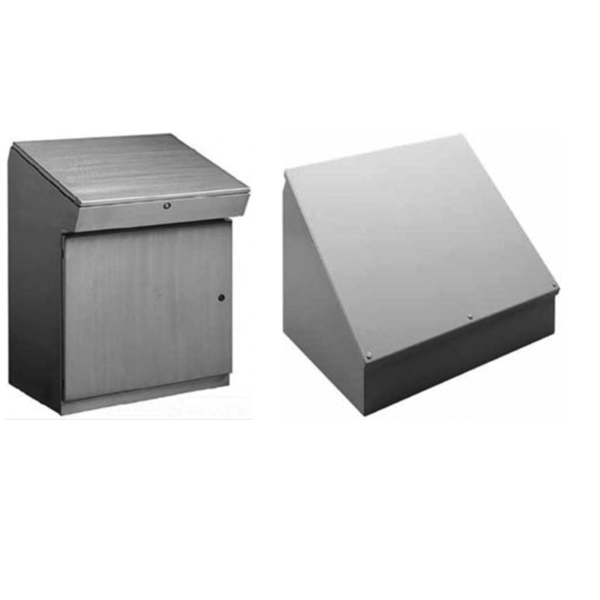Consolet Enclosures

RSP Supply offers a complete line of consolet enclosures designed for instrumentation, control panels, and operator interfaces. These compact and versatile enclosures are perfect for desktop or console-top use, providing secure and efficient access to critical controls.
Constructed from durable materials such as 1010 carbon steel, consolet enclosures provide protection and reliability in demanding industrial environments. Available in multiple sizes and configurations, they feature angled surfaces, typically 30° or 60°, that make viewing and adjusting controls comfortable for operators. The design promotes efficient operation without requiring awkward positioning or difficult access to switches and indicators.
Many models are NEMA-rated, offering protection against dust, moisture, and environmental contaminants. Consolet enclosures are ideal for housing small control devices, instrumentation systems, and electrical components that need frequent interaction. Accessories such as pedestals, mounting panels, and custom cutouts further enhance their adaptability and ease of use.
More Information about Consolet Enclosures
Accessories for console enclosures, like customer controls, switches, and pedestals, can enhance their usability and flexibility. Nonetheless, the basic structure of the console enclosure must first accommodate these controls and add-ons, as well as the necessities of any associated circuitry. The elements used to create the console enclosure should ideally enable these new functionalities without compromising other desirable attributes of the console enclosure, such as a clean and professional appearance.
FAQs
Q: What are consolet enclosures used for?
Consolet enclosures are used to house control panels, instruments, and interface devices in industrial or commercial settings where operator access and visibility are essential.
Q: What materials are consolet enclosures made from?
Most consolet enclosures are made from 1010 carbon steel, providing strong protection and long-term durability in demanding environments.
Q: Are consolet enclosures NEMA-rated?
Yes. Many consolet enclosures meet NEMA standards for environmental protection, ensuring reliable performance in dusty or moist conditions.
Q: Can accessories be added to consolet enclosures?
Yes. Accessories like switches, pedestals, and custom control panels can be added to improve functionality and operator convenience.
Q: Do consolet enclosures have multiple mounting sides?
Yes. Consolet enclosures typically feature dual mounting surfaces that allow for organized and ergonomic placement of controls and devices.
Why Buy Consolet Enclosures from RSP Supply
RSP Supply provides high-quality consolet enclosures from trusted manufacturers, backed by competitive pricing, fast shipping, and expert technical support. Our team helps you choose the right enclosure for your control or instrumentation application, ensuring durability, comfort, and compliance with industrial standards. With RSP Supply, you’ll find dependable solutions that enhance both usability and protection.

